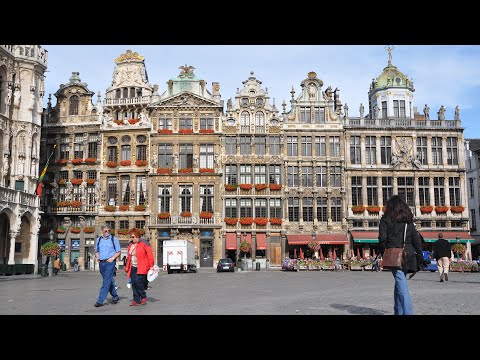
Belgium, a country renowned for its rich history, exquisite cuisine, and vibrant culture, offers a unique experience in each of its cities. Among these, Bruges and Brussels stand out as two contrasting yet equally enchanting destinations. Exploring these cities provides insight into Belgium’s medieval past and its modern present, from the timeless tranquility of Bruges’ canals to the dynamic buzz of Brussels’ cosmopolitan streets.
#### Bruges: The Venice of the North
Bruges, often referred to as the “Venice of the North,” is a picture-perfect snapshot of medieval Europe. This charming city is famous for its well-preserved medieval architecture and its extensive network of canals. A stroll through Bruges is like walking through an open-air museum, with each corner revealing historic churches, quaint old bridges, and cobbled lanes lined with ancient buildings.
One cannot miss experiencing a boat tour along the canals for a different perspective of the city. As you glide under low bridges and past silent swans, you’ll see why this aspect alone draws numerous visitors each year. The centerpiece is undoubtedly the Market Square (Markt), dominated by the impressive Belfry tower which offers panoramic views over tiled rooftops if you’re willing to climb its 366 steps.
The Groeningemuseum is another highlight in Bruges. It houses an extensive collection of Flemish masters including Jan van Eyck and Hieronymus Bosch which encapsulates Flemish art history wonderfully within its walls.
For culinary enthusiasts, trying local delicacies such as Belgian waffles and chocolates or grabbing a seat at one of the cozy cafes that dot every street corner is imperative. Additionally, no visit to Bruges would be complete without sampling some locally brewed Belgian beer at any traditional pub.
#### Brussels: The Heartbeat of Modern Europe
Contrasting with Bruges’ medieval charm is Brussels — Belgium’s capital and political core— vibrant with contemporary energy yet steeped in history all at once. As both headquarters to NATO and the European Union’s principal institutions, it positions itself as a crucial player on both European and world stages.
When visiting Brussels, start from the Grand Place (Grote Markt), an opulent square surrounded by ornate guildhalls and dominated by the gothic splendor of Town Hall spire. Each building here tells a story that continues to enchant visitors with its architectural magnificence particularly during sunset when illuminations breathe new life into this historic square.
Museums abound in Brussels but do not miss out on visiting Magritte Museum dedicated entirely to Belgium’s cherished surrealist René Magritte or exploring comic strip art at Belgian Comic Strip Center which celebrates beloved characters like Tintin who mirror part of Belgians’ identity.
In terms of food, Brussels presents an eclectic mix from fine dining restaurants serving international cuisine to local eateries offering specialties such as ‘moules frites’ (mussels served with fries) — arguably best enjoyed with Belgian beer varieties from fruity lambics to strong Trappist brews.
Moreover, while Brussels might seem all business during day; night reveals another layer as bars come alive offering endless possibilities for revelry or cultural engagement whether through live music venues or classical performances notably at La Monnaie Opera House.
#### Connecting Two Worlds
Despite their differences in scale and spirit, both Bruges and Brussels offer compelling experiences that reflect broader aspects of Belgian culture: One preserving historical narratives through silent stone while another narrates contemporary tales loudly between bursts from beer taps. Conveniently connected via train services under an hour’s commute apart; they collectively encapsulate what makes Belgium uniquely captivating —a seamless blend between past reverences and present innovations.
